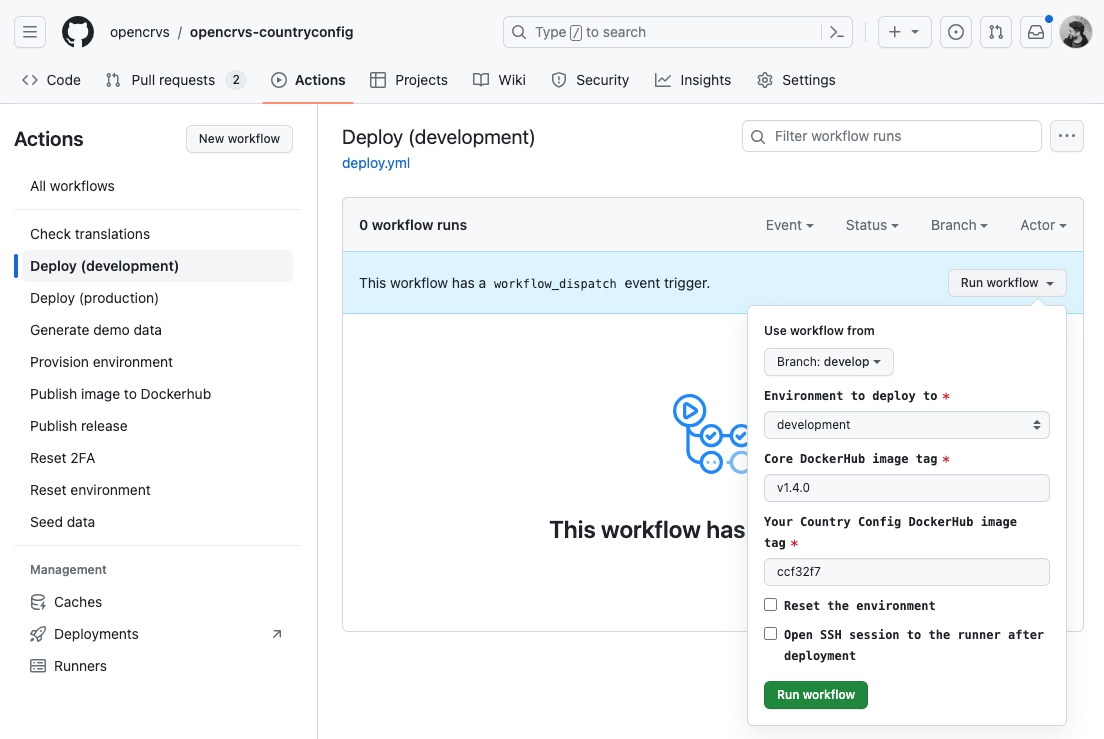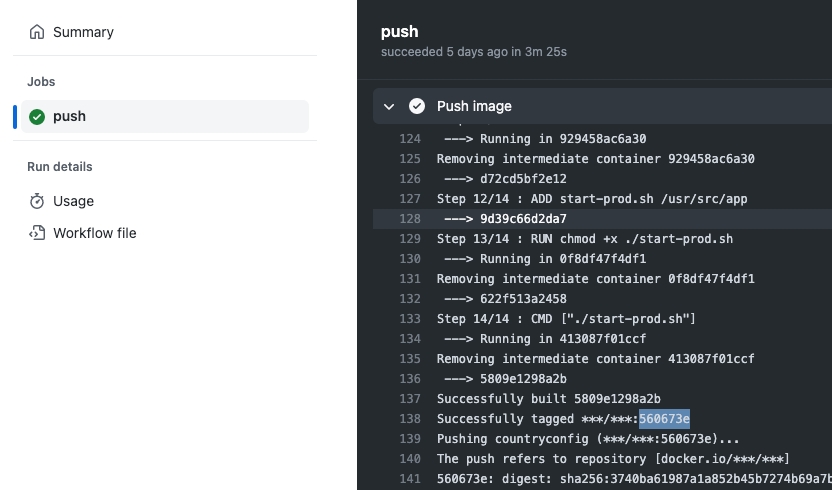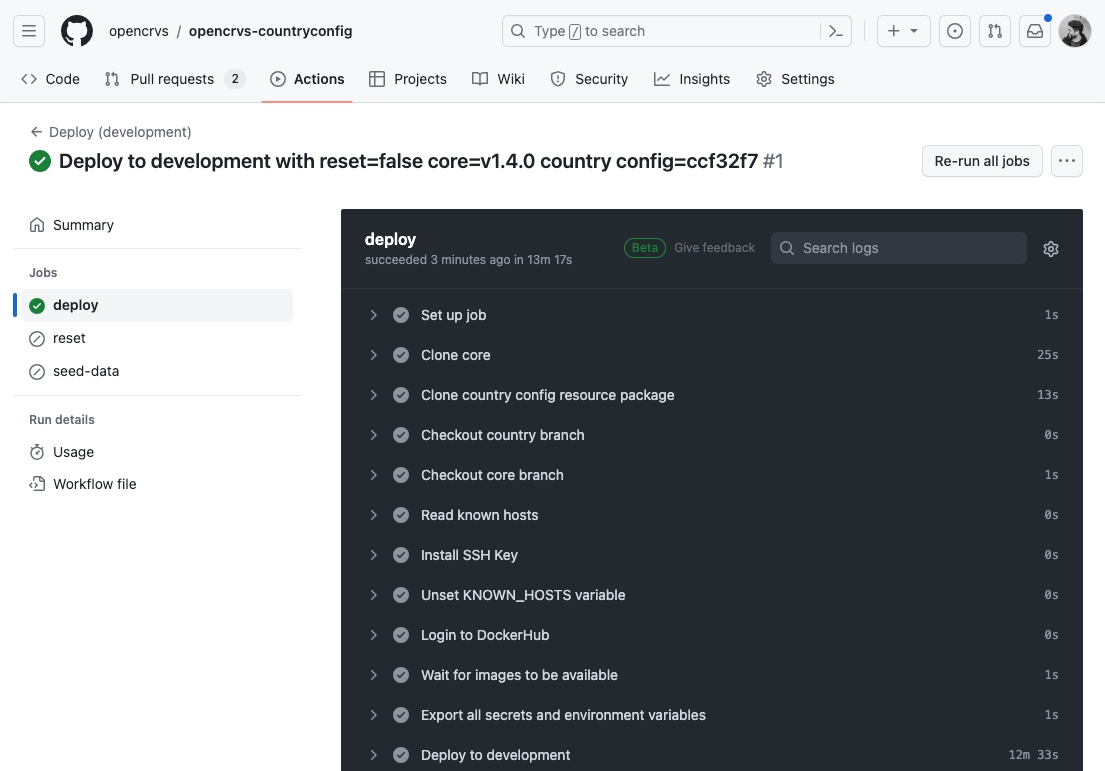Before you can deploy, you need to make sure that your country configuration Docker image has compiled and has been pushed to your container registry (E.G. Dockerhub). This was explained previously in 4.3.5.2
Copy the tag associated with your countryconfig Docker container image because you will use it in the next step.
You can deploy to your server using the automated "Deploy (development)" Github Action for development, qa and staging environments and the "Deploy (production)" Github Action for staging and production environments.
First, use Deploy (development) to deploy to a relevant environment to test the process.
a) You will be required to select the base Git branch and environment that you wish to deploy to.
b) You will be required to enter the OpenCRVS Core Dockerhub image tag for any tagged build on Dockerhub) to refer to the OpenCRVS Core release of choice. Usually this will be an official release: E.G. v1.5.0
c) You will be required to enter the OpenCRVS Country Configuration version (or short Git hash tag for any tagged custom country configuration build on Dockerhub)
d) (optional) In Deploy (development), there is a checkbox available to you to "Reset the environment". This will empty all databases in the environment allowing you to re-seed. This is useful during development and testing. In production, there is no way to clear all databases from a Github action as a security posture.
e) Click Run workflow, and watch the output to make sure that the deployment was successful.
If this is your first time deploying OpenCRVS, you need to seed it explained here.
If your environment is already seeded (you only need to seed an environment once), then you can proceed to login.
You can use the Deploy(production) action to similarly deploy to your production & staging environments before seeding them too.


